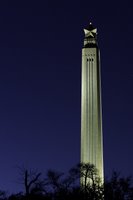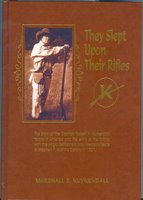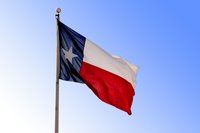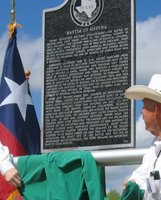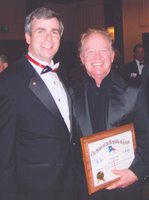
On November 4th, 2006, John Curtis Thrash, Jr., departed peacefully and comfortably, with his loving family at his bedside, the result of a brief illness stemming from a previously existing cardiovascular condition. He was 81 years old.
John’s gentle, caring and thoughtful nature was known to all who knew him. The exemplary conduct of his personal and professional life informed and inspired everyone with whom he came in contact. If you knew him, you loved him.
Born February 9th, 1925, John was the only son of Allie and Curtis Thrash, Sr. living in Galena Park, Texas, where John and his sister, Evelyn, grew to become healthy, happy young adults. Here he excelled at the highest levels academically, lettered in four varsity sports, sang cheerfully with a beautiful baritone voice, and mastered a musical instrument, the French Horn, so much so that he was offered to play Second Chair with the Houston Symphony Orchestra when he was still less than 19 years old.
John matriculated in the University of Texas, Austin in 1943, earning a science baccalaureate four years later in Petroleum Engineering, a profession which proved to be his true calling. Ever the optimist, John relished the idea of improving the lives of others by providing for their energy requirements through prudent, efficient and conserving means. During his entire professional career, John frequently declared "Even with all the long hours, I still look forward to every project and I have never really felt like I was having to go to work a single day in my life."
His career continued until his passing, interrupted only by his service as a Naval Officer during World War II, in the Pacific Theater, and two years on Guam as a full Lieutenant during the Korean Crisis.
It was this vision, drive and intelligence that propelled John to become recognized by industry publications and writers and among his peers internationally, as one of the world’s foremost developers of complex clever reservoir engineering projects and solutions. His scope of interest was broad technically and international geographically examining everything from enhanced oil recovery potentials in South America to energy infrastructure in China and everything between.
One such project, the Two Fred’s Carbon Dioxide Enhanced Oil Recovery ("EOR") Project, located in the Permian Basin, is still regarded today as one of the most successful EOR projects ever undertaken, accomplished at a time when foreign oil dependency meant domestic production had to be wrought of every available barrel. Another important undertaking by John was the enhancement of the Bammel Natural Gas Storage Facility, serving Houston, Texas, one of the largest storage facilities of its kind in Texas when constructed. This project optimized use of the area’s pipeline capacity serving the communities and industries along the Houston Ship Channel, substantially mitigating the need and environmental impact of additional pipeline capacity in the region during that time.
At the beginning of his career, John held the distinction of drilling the deepest well of record at that time, when he was carefully coaxing and developing production from the Knox Bromide Field in Oklahoma, a complex retrograde condensate reservoir, producing at several thousands of pounds of pressure. Most recently, John was principal engineering architect of the highly successful Stagecoach Natural Gas Storage Facility, Owego, NY, which serves New York City and the Northeast U.S. much in the same way the Bammel Facility has served Houston and the Texas Gulf Coast.
John was a member, officer and director of numerous professional, civic and charitable organizations and boards. He has financially supported many civic, medical and arts organizations and research efforts. He served on the President’s Advisory Committee on Energy, and at the invitation of the United Nations Economic Commission for Europe he presented to their Symposium in Paris, France, a treatise on European storage potentials, Trends in Underground Storage of Natural Gas, which contrasted the U.S. natural gas industry with that of Western Europe. He was a representative to the World Petroleum Congress in Mexico City, Chairman of the Houston American Petroleum Institute and served on the University of Texas Engineering Advisory Committee. John was a recognized First Families of Texas and descendent and Current President of The Sons of the Republic of Texas.
After Mid-shipman’s School at Columbia University and receiving his degree in Petroleum Engineering from the University of Texas at Austin, John began work as a young Petroleum Engineer in the Permian Basin near Odessa, Texas. Here he also played semi-professional baseball, obtained his pilot’s license and became quite the eligible bachelor.
It was also in West Texas where John met his lovely, intelligent and beautiful wife, Patricia Ruth Francis Thrash, recently moved to the area with her family from California. Patricia and John were soon married and shortly thereafter began their family, first with their daughter Denise, then son John, then youngest daughter, Allison. Moving as family through several oil-patch communities such as Midland, Odessa, Dallas and Oklahoma City, and after another period of service in the Navy during the Korean Conflict, the family finally settled in Houston, the "Oil Capital." Patricia and John have been happily married to one another for 57 years. They were blessed with a remarkable granddaughter, Meghan Patricia Thrash, who is the source of some of the greatest pride the couple felt for their family, and who was always the true apple of John’s eye.
Each of their children have developed independent careers while still helping to advance the family business, from time to time, that was founded by John and Patricia in the late 1970’s. Denise is a criminal defense attorney in Houston, Allison is engaged in a singing and recording career based in Austin, and John is a retired physician who practiced in Houston for a number of years before combining with his father full time to create a thriving, multifaceted energy concern. Moving from Enhanced Oil Recovery during the era of oil price deregulation through independent natural gas storage during the era of natural gas pipeline capacity deregulation, the family’s current day enterprise, eCorp LLC is a vibrant, private, integrated energy company which specializes in mid-stream asset construction, ownership and operation along with natural gas production and energy marketing.
As extraordinary as his many professional accomplishments and remarkable personal, family, civic and philanthropic achievements and milestones, John Thrash’s greatest abilities and contributions derived from his exemplary character and personal charisma. However, he was a gentle man with a calm demeanor, never loud or forceful with others. Nonetheless, with subtle urging and direction, he profoundly mentored those around him as to the formulas necessary for a successful, meaningful life in the human spiritual sense. If Will Rogers had met John Curtis Thrash, Jr. he would have coined a corollary to his famous quote "I never met a man I didn’t like!" which would have read something like, "I never met a man that didn’t like John Curtis Thrash, Jr.!"
Truly a bona fide member of "The Greatest Generation," John Curtis Thrash, Jr. is deeply loved by his family, friends and colleagues and we will mourn his absence. His exceptional life, extraordinary accomplishments, and enlightened way of being will be celebrated, remembered and revered. Most of all, we will strive to emulate his light as much as we are able.
In addition to his wife, children and granddaughter, John is survived by his sister, Evelyn, and brother-in-law, Gesna B. Davis, Jr., and many beloved family members.
The Family wishes to thank Dr. Neal Kleiman, M.D., Dr. William Winters, M.D., and the entire Methodist Hospital Cardiac Care Unit professional team for their exceptional care given John in his time of need.
Services will be held Thursday, November 9th, 2006, at 4:00 PM at The Sanctuary at Unity Church of Christianity, 2929 Unity Drive, Houston, Texas.
In lieu of flowers or similar expressions of condolence, the family requests that contributions be given, if desired, in the name of John Curtis Thrash, Jr. to any of the following organizations:
The Research of Dr. Neal Kleiman, M.D.
The Methodist Hospital Foundation
P.O. Box 4384
Houston, Texas 77210-4384
Questions: Karen Soh, 832-667-5829
The Sons of the Republic of Texas
Sam Houston Chapter #38
Lynden E. Rasch,
3507 Glenwood Springs Drive
Kingwood, Texas 77345
The University of Texas Nano-Research Project:
Center for Nano and Molecular Science and Technology
The University of Texas at Austin1 University Station Stop, Mail Code-A5300Welch Hall, Room- 3.202 Austin TX 78712
Rice University Nano-Research Project:
Richard E. Smalley Institute for Nanoscale Science and Technology
Rice University
6100 Main Street
Space Science Building. Room 301G
Houston, TX 77005
